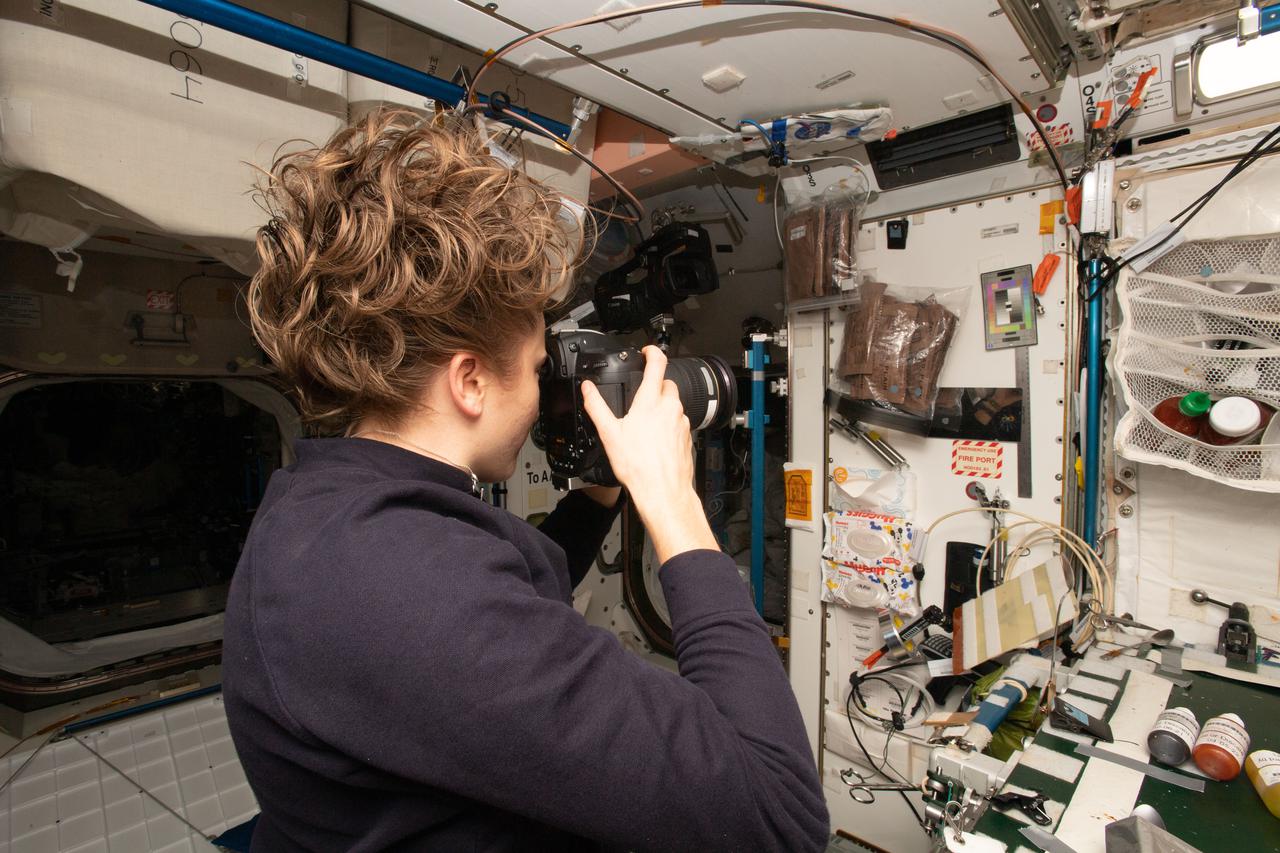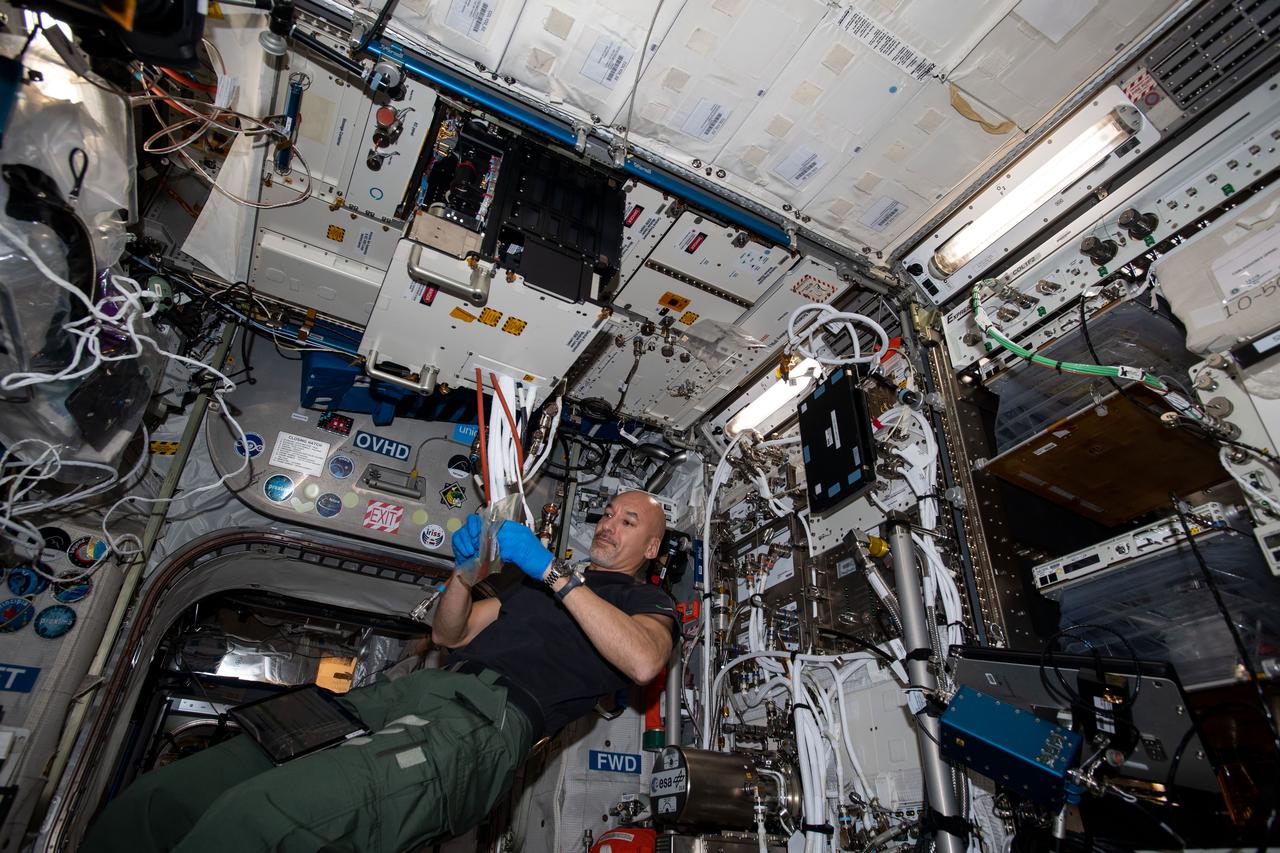Station Science Top News: Sept. 29, 2022
Results from the SQuARE experiment indicated that an artificial-intelligence (AI) tagging system recognized about 78% of crew member faces in more than 7,000 station photos. Computer vision technology can shed new light on crew interactions and their social practices, helping scientists to better understand and potentially improve the quality of life on the International Space Station.
One of the social patterns observed in this study was that NASA crew members take many pictures with each other, but not many with cosmonauts. Crew members from smaller agencies like ESA (European Space Agency) and the Japan Aerospace Exploration Agency tend to take more pictures with NASA crew members than with each other. Making more photos from other agencies available and extending the AI identification system to tag the modules behind astronauts could provide more insights about crew interactions.
 NASA astronaut and Expedition 66 Flight Engineer Kayla Barron snaps pictures of a sample “pit” aboard the International Space Station as part of the SQuARE experiment. Credits: International Space Station Archeological Project/NASA
NASA astronaut and Expedition 66 Flight Engineer Kayla Barron snaps pictures of a sample “pit” aboard the International Space Station as part of the SQuARE experiment. Credits: International Space Station Archeological Project/NASA
***
Researchers used a high-speed camera and image-processing algorithm to analyze the formation of bubbles through manipulation of an electric field, or shear flow. This algorithm could provide a benchmark for future testing and generate a program to capture the geometry of each bubble in the presence of light and shadow. Advances in boiling technologies enabled by microgravity research could improve in-space water purification, turbine power generation, and electronics cooling.
Geometric characteristics of isolated bubbles, such as contact angle and diameter, are more easily observed in microgravity than Earth’s gravity, but imaging bubble contour is complicated by distortions from reflections and background light. The Multiscale Boiling study, sponsored by ESA, worked to address this challenge. The recent pursuit of in-space boiling research has already led to advanced analysis of bubble formation and dispersion, with implications for many applications affected by these phenomena.
 A view of ESA astronaut Luca Parmitano during the installation of the MultiScale Boiling Experiment Container in the Fluid Science Laboratory aboard the space station. Credits: NASA
A view of ESA astronaut Luca Parmitano during the installation of the MultiScale Boiling Experiment Container in the Fluid Science Laboratory aboard the space station. Credits: NASA
***
Research results suggest that the effect of a treatment with BMP2, a protein that induces bone regeneration, depends on the physical loads upon the bone. Understanding how BMP2 helps injured bone recover could help keep astronauts’ bones safe and healthy during deep space missions.
Trabecular bone tissue exists at the ends of some bones and consists of thin rods and plates arranged in a porous pattern. On Earth, BMP2 treatment induced smaller pores (i.e., stronger bone tissue) in the trabecular bone tissue of weight-bearing sites. In microgravity, smaller pores in trabecular bone were observed in non-weight bearing bones dependent on muscle contraction.
This research was a part of the Rodent Research-4 (CASIS) study.







